Premium Only Content
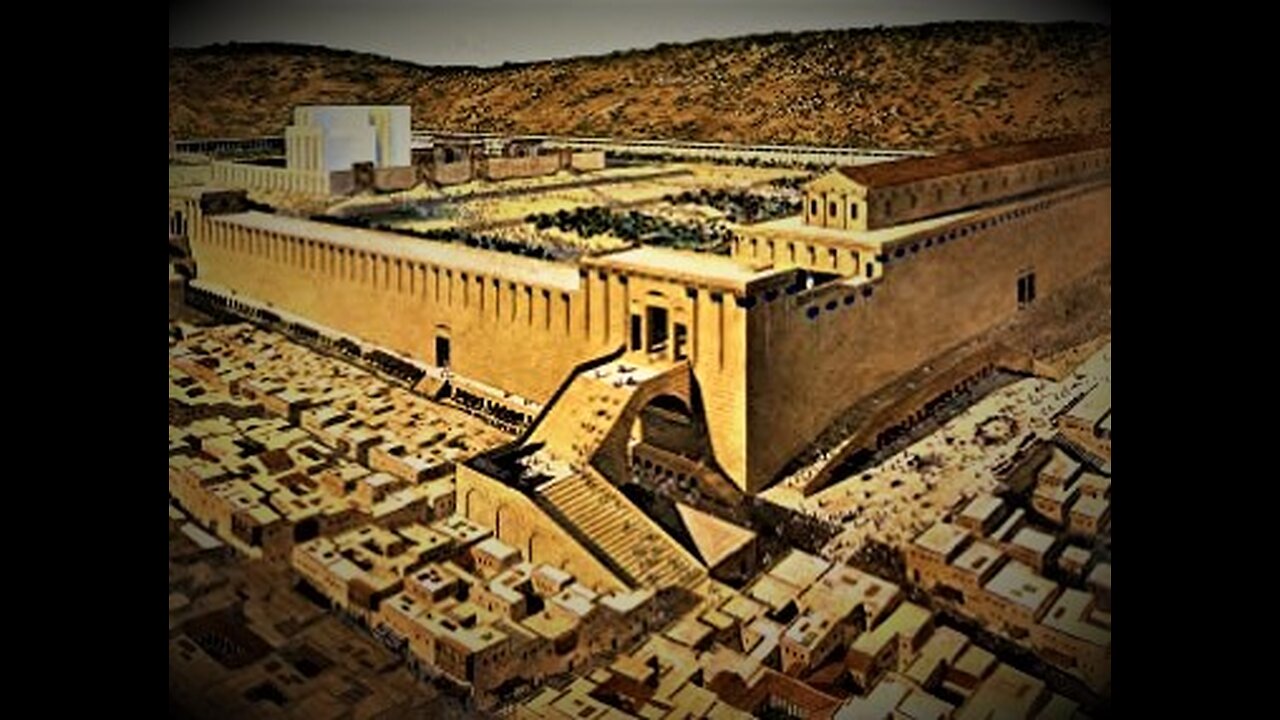
Moscow Is The Real Jerusalem (irrefutable evidence)
In the 16th century, a Russian monk, Filofej, coined the expression “third Rome” to emphasize the spiritual role assumed by Moscow following the fall of Constantinople (1453) and the marital union between the Grand Prince of Moscow, Ivan III, and Sophia (Zoe) Paleologue, niece of the last Byzantine Emperor Constantine XI
«Two Romes have fallen (those of Peter and of Byzantium)» the monk wrote to the Muscovite Grand Duke Vasilij III. «The third (Moscow) stands and the fourth will not be».
Since then, the Christian imperial ideology built around the central role of Moscow has substantially evolved.
Surely, it was supported by the de facto autocephaly of the Russian orthodoxy that took place in 1448 still officialized de iure only in 1589 by the Patriarch of Constantinople, Jeremias II Tranos.
Other Russian places have been associated with Rome though:
before Moscow this was the case of Tver and Novgorod; later on, at the beginning of the 18th century, it was the turn of Saint Petersburg.
In the 15th century, the monk Foma not only considered Prince Boris Alexandrovič of Tver, at the time a rival of Moscow, as “the new Jacob”, “the new Joseph”, “the other Moses”, but he also used to compare him to the Roman Emperors Tiberius, Augustus, Justinian and Theodosius.
Foma would hail Prince Boris with the title of Emperor and would call the town of Tver “new Israel”.
In addition, Dimitrij Gerasimov, aid to the Archbishop Gennady of Novgorod, wrote the “Story of the white mitre”, in 1490, where he stated that Novgorod was the real descendant of Constantinople and the new center of Orthodoxy.
The term “third Rome” appeared in this latter text, for the first time, although it referred to Novgorod, and not to Moscow. It was only later, with the accession of Peter the Great, that Saint Petersburg came to be considered as the see of the “new Rome”.
But the idea of the translatio imperii must be understood as a purely propagandist ideology during the Byzantine and Tsarist periods and also of the Sovietism, or is there a hidden higher symbolic meaning?
As a matter of fact, until the 17th century, not only did they mention the term “third Rome”, in common usage nowadays, but also “new Israel”. Moscow was considered as the imperial heir of Rome as well as the spiritual heir of Jerusalem.
British historian and expert in Russian history, Prof. Perrie[1], reminds us of the importance of the year 1666, in this regard. «The [author’s note: ecumenical orthodox] council of 1666–1667 influenced the status of the concepts both of the Third Rome and of the New Israel:
it suppressed the ‘Tale of the Novgorod White Cowl’, which contained a version of the Third Rome theory; and it criticised Nikon for describing himself as ‘Patriarch of the New Jerusalem’».
Perrie also points out that the year 1666 was regarded as a particular year, at the time, because to many Christians that year meant the end of the world or Apocalypse.
The first explicit reference to Rome dates back to the coronation of Ivan IV as the first Tsar (1547).
Later, Peter the Great was the first to assume the role of Emperor, making a direct reference to the Roman tradition and discarding the pre-petrin Russian titles. Moreover, several texts of the 16th century mentioned a link between the Roman Empire and the land of Russia. For instance, in the Poslanie (epistle) of Spiridon-Savva and in the Povest’ o knjaz’jach vladimir-skich (The Tale of the Princes of Vladimir), the authors relate Rurik to the descendance of Prus, brother of Augustus.
Rurik (or Rjurik) [2] lived in the 9th century and is the forefather of the Russian Royal Dynasty of Rurik.Tsar Boris Godunov appears to have given much importance to Moscow as the new Jerusalem.
He became the first de facto Regent of Russia (1585-1598) and was to become also the first Tsar (1598- 1605) not to be a descendant of the Rurik Dynasty (the first great dynasty of Russian rulers before the Romanov’s who reigned for about three centuries (1613-1917)).
Godunov decided to create a new Holy Sepulchre inside the Kremlin, based on the one in Jerusalem, but did not manage to complete that project.
A related and intriguing theory brought forward by a Russian art historian and byzantinist, Alexei Mikhailovich Lidov, affirms that the famous onion domes that can be found in numerous Muscovite architectural works were not inspired either by Tatar, Persian or Indian buildings. They were meant to mirror the dome of the ciborium of the Holy Sepulcher, in Jerusalem, instead; in line with the specific shape that the dome began to have from around the middle of 11th century and onward.
The adoption of this symbol was meant to emphasize the idea of Moscow being the new Jerusalem and, in a wider sense, of Russia being the new Israel and see of the second Advent or Parousia.
The idea of Moscow being the third Rome implied a double meaning, as was the case earlier with the idea of Constantinople being the second Rome.
On the one hand, it reflected the spiritual continuity through Byzantium, on the other hand the imperial and political continuity of the by-then defunct Byzantine Empire. After the fall of Byzantium, Moscow became both the spiritual heir of Jerusalem and the imperial heir of Rome.
Therefore, Moscow had a double link and a double role, just as Rome and Byzantium had had theirs: metaphysical and physical, spiritual and political.
After the fall of Constantinople, Hagia Sophia ceased to be the most important church for the Russians as it was replaced by the Church of the Resurrection (Church of the Holy Sepulchre) of Jerusalem.
It is not by chance that the above-mentioned Patriarch Nikon built a monastery, not far from Moscow, in 1656, named “New Jerusalem”, also known as the monastery of the Resurrection, which mirrored the one in Jerusalem. The profanation of Jerusalem by the Saracens, the conclusive victory over the Tatars in the Russian territory (1480) and the fall of Constantinople (1453), all probably contributed to root this idea, in the Russian thinking, of the translation of the new Jerusalem to Moscow.
Hence, it can be understood that Moscow can be comprehended on two different reality planes: on the one hand, as a spiritual centre and on the other hand, as a political centre. Coming back to present time, it seems clear to us that the direction followed by Moscow, in politics, is heading to a multi-polar world. In our opinion, this very same trend excludes any “hegemonic” will as the founding idea of the Russian political thought.
Rather, that which conveys the impression of such willpower is the political stance of the modern overseas-based parody of the Roman Empire.
On the contrary, considering the vigor and the vitality of the post-Soviet Russian orthodoxy and the well-grounded religious tolerance on the vast and multiethnic territory of the Federation, we feel that Moscow should be viewed as a prospective spiritual center of worldwide influence in the future. In this sense, Moscow could be a “fourth Jerusalem” or “third Rome”, according to a universal metaphysical vision harking back to the Augustan pax romana; a vision already brought forward, in the essence and philosophically speaking, by several Russian intellectuals in the second half of the 19th century[3].
When referring to Moscow as the “fourth Jerusalem”, we implicitly include Rome and recognize her as a successor of Israel as a global centre of spiritual influence.
By this, we are referring to a translatio exclusively of place, specifically of place of spiritual influence, with its own peculiar genius loci, and not to a central see of one or more religions.
Therefore, we are making a reference to a strictly metaphysical and esoteric vision and not to a religious and exoteric one. Unfortunately, the relevance of essentially metaphysical ideas such as Fas and Ius and the spiritual significance of the mos maiorum, in the ancient Rome, are often underestimated by scholars.
This can be explained by a lack of an appropriate understanding of the traditional metaphysics which goes way beyond each single religious manifestation in time and space.
Anyway, it must be said that the movements supporting the resurgence of monarchy are far from being defunct in the Russian territory. Recently, one of the most prominent representatives of the Russian orthodoxy after Patriarch Kirill, Vsevolod Chaplin, pleaded in favour of the restoration of monarchy, claiming that Putin or one of the heirs of the Romanov royal family would be the most suited to become Tsar.
Nonetheless, remaining faithful to the Justinian’s “theory of symphony” between State and Church[4], without going back to the Costantinian’s caesaropapism as it was the case in the imperial Russia and still is nowadays, albeit formally only, in the United Kingdom[5]. The concept of caesaropapism refers back to the traditional king-priest exemplified by the figures of Melchizedek in Jerusalem and of Augustus in Rome.
In this perspective, we can better understand the attempt being made to reconcile the Orthodox and the Catholic Christian Churches. Albeit the recognition of the importance of the synodality and the honorary primacy of Rome[6], the decisions of those Christian churches reflect more and more the “spiritual weight” of Moscow and its influence on the political scene of Russia.
A similar attempt of reconciliation took place during the Council of Florence, in 1438-1439, and the related papal bull of Eugene IV, Laetentur Coeli, which reported the impending reconciliation between the Western and the Eastern Christian Churches. Except for those millions of Ukrainians and Belarussians who joined the Catholic Church through the Union of Brest-Litovsk (1596), the above-mentioned Council was of no real consequence.
Nonetheless, this event came to be crucial for the emergence of the Italian Renaissance: it was because of that Council of 1438 that George Gemistus Plethon went to Florence, as Advisor of the Byzantine Emperor John VIII, along with other scholars the likes of Bessarion.
[1] M. Perrie, Moscow in 1666: New Jerusalem, Third Rome, Third Apostasy, 2014.
[2] Because of his Varangian (Viking) origins and being the Ruler of the Rus’ of Kiev, according to Henry Spelman and other supporters of the Nordic Israelism, Rurik would be a descendant of the Israelite Tribe of Dan. This latter tribe apparently moved (also) to Ireland and to Scandinavia during the pre-Christian period.
[3] See our Putin e la nave dei filosofi (Putin and the philosophers’ ship).
[4] The Justinian’s “theory of symphony” between imperium and sacerdotium was rooted in the Roman ius publicum and already outlined by Titus Livius (“Quis dubitat quin in aeternum urbe condita, in immensum crescente, nova imperia, sacerdotia, iura gentium hominumque instituantur?”, Ab urbe condita, 4.4.4.).
The same theory was resumed by the Council of Russian bishops in 1551 even though it was already renowned in the Muscovite area at the time. Already back in about 1500 the abbot of Volokolamsk, Iosif of Volotsk, created a monastic movement that supported a strong link between Church and State, a sort of “political theocracy”. Nevertheless, at the time it was actually more of a dominion of the tsarist power over the religious one than an actual symphony.
[5] In the United Kingdom since the 16th century, following the separation from the Roman Catholic Church, the political sovereign is also the religious head. Queen Elizabeth II is Head of State of the United Kingdom (and of other 15 countries of the Commonwealth) and at the same time Head (Supreme Governor) of the Church of England, although with limited powers.
[6] See our Ecumenismo cristiano: ritorno alla Tradizione ed al primato di Roma (Christian ecumenism: back to the Tradition and to the primacy of Rome).
Source: http://www.centrostudilaruna.it/moscow-third-rome-or-fourth-jerusalem.html‹ ›
New Jerusalem Monastery, Russia
In the 17th century, a little town located just 50 kilometers from Moscow suddenly became a stronghold of the spiritual and geographical revolution:
it was supposed to become the new Holy Land of the Christians, with an exact replica of The Church of the Holy Sepulchre, its topography and relics.
This is how the local hills gained their names:
Mount Zion, Mount Tabor, and the Mount of Olives. In addition, the Istra River was renamed the Jordan River.
These were the only similarities to the Holy Land — the brutal Russian climate remained unchanged, and the little settlement near Moscow named "New Jerusalem" couldn't become the center of Orthodox Christianity.
The famous Patriarch Nikon of Moscow, an unusual person who, although being greatly misunderstood by contemporaries, played a huge role in the history of Russia. In fact, he was the author and initiator of the already mentioned changes.
Among Nikon's schismatic ideas were the church reforms that permanently divided the country, giving rise to the Old Believers movement.
New Jerusalem Monastery, Russia
Patriarch Nikon was actively involved not only in the religious but also social life of the country, trying to interfere with government affairs.
Alas, he crossed the line in this sphere, just as he did with the church. As a result, he was evicted from Moscow and then settled down in New Jerusalem, placing the construction of the Resurrection Cathedral under his personal supervision.
We have to give credit to the scale of the idea. The Resurrection Cathedral was supposed to visually represent the leadership of Russia in the world of Orthodox Christianity.
The Patriarch ordered architects to copy the Palestinian Cathedral and, at the same time, gave them room for creativity. For example, there was the idea of building a temple with 365 chapels representing each day of the year! However, this particular idea was turned down during the construction. Nevertheless, the cathedral, decorated with hand-painted tiles and white-stone carvings, turned out to be rather whimsical.
The domes of the underground church rose up from the ground level in front of the main section — the Resurrection Cathedral was crowned with a mighty dome that rests on the cross-shaped foundation; and further behind them, there was a huge stone-tented roof over the Holy Sepulchre Chapel. The tent was so big that the architects couldn't secure it well enough, and so in 1723 it collapsed.
New Jerusalem Monastery, Russia
After the two fires that followed the first incident, the cathedral underwent a major restoration, which was supervised by architect K. Blank, who implemented the design from the famous Francesco Bartolomeo Rastrelli.
By the 20th century a number of additional structures appeared in the monastery. However, in 1941 most of the buildings were damaged due to the war, and many architectural monuments were completely destroyed.
Some of them were rebuilt, except for the main architectural piece — the gigantic seven-tier belfry.
New Jerusalem Monastery, Russia
Today the New Jerusalem monastery shares a ground with the art museum that is also located on its territory. The city of Istra (former Voskresensk) has always been in the shadows, silently growing around the monastery.
Like the monastery, during World War II, the city was occupied and then completely destroyed during the retreat of the enemy troops. After the war, architect A. V. Schusev designed a master plan that would turn the city of Istra into a large recreational center; but industrial and scientific research fields began to develop here instead.
This is why, aside for the New Jerusalem Monastery, the main "landmarks" of Istra are a baby food factory, furniture and textile factories, as well as tile, brick, and other plants.
Fomenko’s New Chronology
In recent years there has been a lot of information and misinformation spread on the internet about the Russian author Anatoly Fomenko and his alternative take on the historical narrative and timeline.
Fomenko’s work is presented in his 7 volume series entitled History: Fiction or Science?.
This voluminous work has become somewhat of an impenetrable tome for the internet meme addicts of the world. For some this has led people on a road of misunderstanding of the concept as a whole and pushing various theories about free energy buildings that are based on “Tartarian architecture“. In their world revival architecture doesn’t exist, everything is fake, and the entire historical narrative that is put forward by Fomenko goes on ignored while armchair detectives put forward these more absurd and weird theories writing about Tartaria as if it’s some collective fan fiction.
Anatoly Fomenko himself is a Soviet-born Russian mathematician, professor at Moscow State University, and a member of the Russian Academy of Sciences. His theory is based on various “statistical” methods which have led more people to give credence to his ideas than others.
He uses a sort of historical parallelism where he finds patterns within the historical narrative and aligns the patterns themselves to attempt to get a more accurate picture of the historical timeline.
He also looks at the historical narrative to see if they can be correlated to celestial events like solar and lunar eclipses. This method, although “statistical”, leaves little room for two historical characters that could have very well been similar in history, but in the Fomenkonian view, they become one and the same. This is not a new approach, however. His methods are more of a continuation of the work that was done by Nikolai Alexandrovich Morozov.
Morozov was an astronomer and Soviet writer that was part of the Circle of Tchaikovsky, otherwise known as the Grand Propaganda Society. He was also a Freemason and author of several radical works dealing with terrorism that would ultimately land him in prison before he would write about his theories of historical revisionism.
It would be in 1907 that Morozov would publish The Revelation in Storm and Thunder where he would lay out his hypothesis that the Book of Revelation is describing an astronomical constellation over the island of Patmos on the Julian date of Sunday, September 30, 395.
He presumed that John was able to calculate the Saros cycle and, therefore, was able to observe a solar eclipse, which would have happened, although it would have been over South America. From this, he would suggest that the author of the Revelation was one and the same as John Chrysostom.
It would be his theories about the timeline of the Middle East and Israel before the first century BC that later attracted the attention of Fomenko, who based his own New Chronology upon them.
It is interesting that Fomenko would follow in the footsteps of a Russian Freemason and propagandist. For a time, he was employed by the Soviet government to analyze Western media for discrepancies and variations on the narratives as they were being portrayed to the public.
It was during this period of Fomenko’s life that he would become fixated on this idea of the entire historical narrative being falsified and began to do more research to support his claim.
Again, this would not be a new thing however, we can look at another historical character named Jean Hardouin who has been described as pathological with his obsession with thinking the historical narrative has been falsified.
Hardouin was a Jesuit-educated French scholar and librarian that is known for a theory he put forward about “universal forgery”. It was during his time as a librarian that he became familiar with classical literature and arrived at the conclusion that with the few exceptions of Homer, Herodotus and Cicero, the Georgics of Virgil, and the Satires and Epistles of Horace, that all the ancient classics of Greece and Rome were forged in the 13th century by monks under the direction of a mystery person named Severus Archontius who he thought might have been Holy Roman Emperor Frederick II of Hohenstaufen.
He thought that most of the ancient works of art, coinage, and inscriptions were fake and contended that the New Testament was actually originally written in Latin. He has been described as “pathological” but is really just an extreme example of this critical trend of his time, following authors like Baruch Spinoza, Thomas Hobbes, or Jean Daillé, who had started to identify and discard mistaken attributions or datings of medieval documents or Church writings.
When he first proposed his theory in 1693, he was a highly regarded scholar and other learned men took him seriously and even argued in defense of the ideas that he put forward.
As he became more adamant about his theory even though he faced criticism his respect among peers began to dwindle. One of his peers described him as “very confident, arrogant, and violently addicted to hypothesis and paradox.” Hardouin thought he had “detected the whole fraud” by spotting a series of clues embedded in classical works, clues that included instances of poor writing as well as a series of anachronisms. He believed the thirteenth-century forgers had not only faked the core classical texts, but also later references to those texts, which would then create a vast web of mutually reinforcing deception. Taken in a broader historical context, his theory can be seen as an extreme version of a growing awareness amongst seventeenth-century scholars of the number of errors, exaggerations, and inventions in the historical record.
This pattern would later be echoed almost exactly by Fomenko.
So, although his work has been dubbed “The New Chronology” this theme of a historical revisionist and the type of character that undergoes such a laborious task is not new at all.
As Fomenko got more enthralled in his work, the more interesting and elaborate his theory became. He would take the skills that he learned analyzing media for the Soviet government and apply them to history. He began to see the accounts of historical narratives in the same way that we today see news stories today as they are reported across various outlets. He was attempting to correct a game of generational telephone and communication breakdown that occurred over hundreds of years reporting the same history from multiple narrators or outlets. From his methods, a new timeline emerges where historical events have multiple cultural and linguistic lenses from which they can be observed. He claimed that many historical events don’t correspond mathematically with the dates they are said to have occurred. He contends that all of the ancient histories of Greece, Rome, and Egypt are just a reflection of things that actually occurred in the Middle Ages while asserting that Chinese and Arab history are fabrications of 17th and 18th century Jesuits. He claims that the Trojan War and the Crusades were the same events and that Gengis Khan and the Mongols were actually something called the “Russian horde”. He goes on further to suggest that the middle and western parts of the United States actually were part of an earlier “Siberian-American Empire” prior to its disintegration in 1775. Among other more wild speculations, these are just a few.
Central to the theory that is presented in The New Chronology is the “hidden history” of the Tartarian Empire. The theory goes on to propose that history has been shaped largely in part after the 1600s to suit the agenda that was set in motion by various conspirators on behalf of the Vatican, the Holy Roman Empire, and the Russian House of Romanov that were all working in concert to suppress the history of this once global Tartarian empire.
The historical timeline that is presented by Fomenko in his work is considerably shorter than the timeline that is presented in mainstream history today. This is because the middle ages can be cut out or “folded” in on itself bringing ancient times and modern times closer together. According to the theory, the written history of humanity only goes back to about 800 AD, and most historical events took place between 1000-1500 AD. The chronology is rejected by mainstream historians is it ignores other sources of cultural datings such as pottery and architectural styles.
Fomenko seems to paint with a broad very generalized brush. Within this massive Tartarian Empire, there were Scythians, Huns, Bulgars, Polans, Dulebs, Drevlians, Pechenegs, Cossacks, Ukrainians, and Belarussians that were all part of this more ancient Empire. We can follow the history of the Huns and trace it up through to the time of the Mongols, and it will show us this giant empire that Fomenko is explaining, but not in the way he explains it. Officially the Mongol Empire did fracture into “Tartar” hordes, but this Mongol horde is not what Fomenko would describe as the Russian Horde. We will be looking into this more closely in future articles.
Among other claims, Fomenko contends that Jesus was a character that was likely based on a number of earlier sources. Among those include, Andronikos I Komnenos who was an emperor of Byzantium that was killed. He goes on to say that the story of Jesus was likely formed from the Biblical stories of Elisha, a reflection of Pope Gregory VII and Saint Basil of Caesarea, and even has elements of Li Yaunhao, an Emperor of China. This might be one of the weaker points of the argument as there have been many messianic figures throughout history and to lump them all together as one single person seems to be kind of disingenuous considering it’s such a common theme in human culture. Fomenko chops inconsistencies up to differences in language, points of view historically, and the agendas of the different authors. This is not to say that the stories of this Jesus guy were all fake or forged. He does say that there was likely a real Jesus but that he had these attributions later ascribed to his life based on various other sources. The real Jesus, as Fomenko claims, comes from Cape Fiolent in Crimea and was born on December 25, 1152 A.D. and was crucified on March 20, 1185 A.D., on Joshua’s Hill, overlooking the Bosphorus.
Further, Fomenko has his own definitions of what Rome is. He merges the cities of Jerusalem, Rome, and Troy into “New Rome” which is the Biblical Jerusalem, and associates it with the Yoros Castle, which just south of the castle he claims is the Biblical Hill of Calvary. He uses the term Rome loosely here as it’s more of the eternal cities and more of a generalized word for the global capital of the time. He associated the first Rome or the most ancient Rome with the word Mizraim and places it in ancient Egypt with its capital Alexandria. He goes on to claim that Rome in Italy was actually founded in or around 1380 by Aeneas. Later another Rome in Constantinople which he associates the Temple of Solomon with Hagia Sophia claiming the Ottoman ruler Suleiman the Magnificent is actually the biblical Solomon.
So why all the discrepancies? The theory as it’s put forward contends that up until the 17-century various dating systems and calendars that were in effect lead to different sources and dates for various events. This would then be corrected by one Joseph Scaliger on behalf of the Vatican and this is where the “official” timeline would be shifted and cemented in history although Fomenko claims it had various inaccuracies.
History is a lie written by 16th c. Jesuits
Not all of it, mind you. No, no, no, that would be craaaazeh. But everything that is supposed to have happened over a thousand years ago is.
How do I know this?
Anatoly Fomenko, one of the world’s greatest mathematicians, told me so in a rather fabulous series of videos promoting what I’m sure is a rather fabulous book.
My favorite video from the series is the one about the Shroud of Turin, which is a shining star of excluded middles and circular reasoning.
Here’s the rundown:
The Shroud of Turin is supposed to date from the 1st century AD
Radiocarbon dating indicates the shroud is from 1050-1350 AD which conflicts with the “consensual chronology” of historical Jesus.
Therefore, either
Rc dating is not accurate and the shroud is actually from the 1st century when Jesus lived
Rc dating is accurate and the shroud is actually a medieval relic, the “consensual chronology” is wrong and Jesus lived in the Middle Ages which OMG is exactly what Fomenko says
Except that of course Fomenko strongly refutes the use of rc dating for historical artifacts, but that only UNDERSCORES HOW RIGHT HE IS CAN’T YOU SEE THAT?!
I’m so getting this book. Meanwhile, here’s the Shroud of Turin video for your viewing pleasure. The robot voice is the product of translation software, I suspect, but it really ties it all together.
Searching for truth in unorthodox ways can be a valuable exercise
Anatoly Fomenko is a renowned Russian mathematician. He statistically analyzed human history, concluded that most of it is fraudulent, and recreated what he believes is the true history.
In Fomenko's world, the "Russia-Horde" built the Great Pyramids, colonized America, and inspired a fiction the rest of us know as the Roman Empire.
If you know enough mathematicians, you might believe almost any story about one. They can simultaneously be brilliant and completely bonkers. (To be fair, we physicists aren’t much better.) Anatoly Fomenko is an accomplished Russian mathematician who also happens to be — in his own mind, anyway — a historian. His version of history, however, is quite different from most.
Fomenko combs through historical records of past millennia, looking for statistical correlations in the patterns of events and their relative timing. Knowing the proper order of events and their relative separation in years helps a historian narrow down the absolute date at which they occurred.
This is chronology. Fomenko doesn’t believe that statistically similar chronologies repeat by chance. When two timelines match up too closely, one of them must be phony. This leads him to some eye-popping conclusions.
The synthesis of his 40 years of work: All of written history is merely copying, altering, and repeating a limited set of historical events that have occurred entirely since 800 AD, and mostly since 1000-1100 AD. Nothing in earlier eras truly happened. This is pithily summarized as Antiquity is Middle Ages. It’s a bit hard to imagine, so let’s look at an example.
Fomenko’s parallel universe
Line up a chart of the reigns of the kings of Judah from roughly 0 to 400 AD with a chart of the German kings of about 950 to 1350 AD.
You can see that the patterns look similar. This could mean that the Kingdom of Judah was concocted by historians ripping off the real history of the Middle Age Saxon dynasty in Europe.
This is Fomenko parallelism, a method somewhat akin to science. It finds many statistical correlations between historical chronologies; you can see about 20 of them here. In some sense, this could mean that an entire false prehistory of Western civilization was stitched together by repeating more modern history with fudged names, dates, and details — emphasis here continues to be placed on could.
Fomenko parallelism also extends to observations of the stars, the physical distances between historical capitals, similarities in names, and so on.
With so much history to re-write, there are many famous casualties. Jesus Christ could have been the Byzantine Emperor Andronikos I Komnenos, fused with elements borrowed from the biographies of other historical figures, possibly including a Pope and a Chinese emperor.
If that sounds too unbelievable, consider that Komnenos was put to death at the end of his reign with some wounds similar to those of Jesus. Then again, he was also licentious, murderous, and cruel. (But that’s according to the official histories, of course.)
Several historically prominent cities are further casualties of Fomenko’s alternate chronology. It turns out that ancient Troy and Jerusalem were the same city.
That city is Constantinople. Ancient Rome, on the other hand, may have been in Egypt, though this “requires additional research.” Rome in Italy was only built in the 14th century.
Enter the Russia-Horde
While all that may sound wild enough, we’re just warming up for the main event. The biggest takeaway from Fomenko’s work may be that much of human history was dominated by the Russia-Horde.
This force, led by czar-khans such as Georgiy — Genghis Khan — Danilovichi, conquered most of the world. In the process, they built the Pyramids of Giza and inspired the historical fiction of the ancient Roman Empire.
The exploits of Dmitry Donskoy were repurposed to create the Roman Emperor Constantine. In this version of history, Donskoy was not a Russian leader who defeated the Mongols, but rather a leader of the Russia-Horde. In the following centuries, the Russia-Horde accomplished other feats such as sending colonizers to America who began a Christian empire of American Incans.
Lessons from Anatoly Fomenko
Fomenko’s seven-volume (!!) series contains a vast range of (mis)information, which rewrites nearly all of human history into its alternate chronology. We can barely scratch the skin of this large and juicy fruit. It’s an entertaining read if you’re looking for something unusual and absorbing.
Many passages, including several linked above, can be accessed for free on the New Chronology website. Here’s Volume I for starters.
What conclusions can we draw from this work? First, it’s a good thing that people are out looking for truth in unorthodox ways. Uncertain dates are foreign to us in an age of voluminous paper and digital records.
However, knowledge of ancient history was only kept alive over several centuries by a small number of literate theologians and scholars.
With the channels of information so few and tenuous, it’s conceivable for large portions of it to be altered in some way.
Fomenko suspects a few Christian scholars, especially Joseph Scaliger, of pulling the Scaligerian chronology switcheroo.
This may be less crazy than it sounds when we consider that it has happened repeatedly within living memory.
Second, mathematics and science are powerful tools, but they are not omnipotent. They have limited value in figuring out history.
Russia Demands Return of Jerusalem Church as Tensions Rise
Israel to handover building complex bought in Jerusalem by Tsar Alexander III to Russian church
Israel has informed Russia that it had begun the legal process of handing over the Alexander Courtyard in Jerusalem’s Old City to the Russian Orthodox Church, Environmental Protection Minister Zeev Elkin, who is also a co-chair of the Russian-Israeli Commission on Trade and Economic Cooperation, Eurasia Diary reports citing TASS.
"On January 22, we informed the Russian side about the latest developments. In response to Russia’s request, filed in the past, Israel has started the legal process to register the Russian Orthodox Church as the owner of the Alexander Courtyard," he said.
"According to the Israeli law, Russia’s claims to this property should be published three times [in Israel], and, if it is not contested within 60 days since this moment, it will be registered automatically. If there are claims with serious grounds behind them, then the issue will be referred to a court," he said.
The announcement was made in the run-up to Russian President Vladimir Putin’s visit to Israel on January 23 to attend the Fifth World Holocaust Forum in Jerusalem.
Kremlin aide Yuri Ushakov told reporters on Wednesday that the process to establish the ownership of the Alexander Courtyard "proceeds in a positive direction", but "not all legal formalities have yet been completed."
The Alexander Courtyard is located in Jerusalem’s Old City, near the Church of the Holy Sepulchre.
The complex of buildings was built by the Imperial Orthodox Palestine Society in 1986, on land bought by Tsar Alexander III in 1859.
The dispute over the property’s ownership began after the 1917 October Revolution.
The Israeli occupation government is in the process of determining the ownership of a church in the Old City of occupied Jerusalem at Russia's request, broadcaster Kan has revealed.
According to the news channel, the occupation state is taking steps to resolve the "real estate dispute" with Moscow. Russia insists on ownership of the Church of Saint Alexander Nevsky and Alexander Square being transferred to the Russian Orthodox Church.
Israel's failure to respond to the Russian request, said Kan, has created "tension" in the relationship between Tel Aviv and Moscow.
Lawyers appointed by the Israeli occupation government are collecting evidence and witness statements from both parties to the dispute. Incoming Prime Minister Benjamin Netanyahu has signed a document recognizing the church as a "sacred site".
This puts the resolution of the issue in the hands of politicians, not the judiciary, despite the petitions submitted in this regard.
Alexander Square has been the subject of dispute for years between the Palestinian Orthodox Society (OPS) and the Russian Orthodox Church.
In the early nineties, after arbitration that lasted about ten years, courts in Israel and New York judged that the OPS is the legal owner of Alexander Square, which it bought from the then Russian Tsar's family.
The Israeli government, therefore, has no authority to transfer it to a third party, according to what was reported by The Marker website on 7 December.
Tensions between Jerusalem and Moscow are rising over the contested Alexander Nevsky Russian church property in Jerusalem’s Old City. Russian President Vladimir Putin recently sent a personal letter to Israeli Prime Minister Naftali Bennett demanding Israel immediately hand over control of the church.
The issue is one of the latest flashpoints in the increasingly contentious relations between the two countries during the Russian war against Ukraine.
Since its establishment in 1860, the Russian Compound in Jerusalem has undergone many makeovers and ownership changes.
Just a week before Nikita Khrushchev’s reign at the helm of affairs of the Soviet Union came to an end in 1964, he approved a decision to sell a 17-acre property in central Jerusalem that was owned by the Moscow Patriarchate for $3.5 million-worth of Jaffa oranges.
All that remained in Russian hands after the sale in the so-called Russian Compound was the Church of Holy Trinity, a landmark of Jerusalem, with its green domes and four octagonal bell towers, and another building. The sale, which was made in oranges, as Israel at that time lacked hard currency, is still considered controversial, as Russia lost a prime piece of real estate in what is the Holy Land for practitioners of three of the country’s major faiths.
The Russian Compound of Jerusalem
Legion Media
In addition to the church, the Russian Compound, which was once walled, had a Russian consulate, men’s and women’s hostels, a hospital and a massive Orthodox mission, among other buildings. In 2021, it houses Jerusalem’s district courthouse, police headquarters (and even hosted nightclubs), although some parts of the compound are now back under Russian ownership (read more below).
Inside the Church of Holy Trinity
Legion Media
19th century Russian legacy
Ever since Russia adopted Orthodox Christianity, one of the greatest desires of the faithful was a pilgrimage to the Holy Land. By the time relatively modern and accessible transport was available for Russian pilgrims, Ottoman control of Palestine made the task all the more difficult. In 1844, the Ottomans allowed Russia’s first Orthodox archimandrite (senior abbot) to live in Jerusalem.
Russian pilgrims
The Library of Congress
A decade and a half later, after Russia came up on the losing end of a power play with the French over the control of Orthodox sites in the Holy Land, Tsar Alexander II used his good offices with the Ottomans to construct a Russian consulate in Jerusalem.
The Russian Compound is one of a number of communities built outside the original city walls of Jerusalem starting in the 1860s
Michael Maslan/Corbis/VCG/Getty Images/Legion Media
The year 1860 witnessed the formation of the Imperial Orthodox Palestine Society, which aimed to guide pilgrims from Russia. These pilgrimages were encouraged and subsidized by Alexander II. Over the next few years, under the patronage of the Tsar, property was bought outside the old city of Jerusalem and named the ‘Russian Compound’.
The centerpiece of the Russian Compound was the Holy Trinity Cathedral, which was consecrated in 1872. Reminiscent of the great cathedrals of St. Petersburg, the Holy Trinity’s main hall and aisles are a shade of blue with light pink accents and depict the pantheon of Orthodox saints.
Easter celebrations at the Russian Compound, late 19th century
F.M.Timon
The Russian consulate was built fusing European characteristics and local construction techniques. However, the most important building in the compound after the main cathedral was known as the Duhovnia. It hosted the Russian Orthodox Church Mission, but was initially built as a hospice in 1863. The name translates as spiritual or ecclesiastical and the courtyard structure was built with its own chapel.
Sergei Courtyard of the Imperial Orthodox Palestine Society in Jerusalem,1889
F.M.Timon
Another impressive structure is the Sergei Courtyard (completed in 1889), named after Grand Duke Sergei, Tsar Alexander III’s brother. With a Renaissance-style imperial tower, the building served as a hospice for Russian aristocrats.
Russian consul in the Russian Compound Jerusalem
The Library of Congress
World War I and its impact
The Russian Compound continued to receive state patronage till the outbreak of World War I, when Russia and the Ottoman Empire found themselves on opposing sides. The Ottoman authorities were quick to expel the Russians in the compound after the war broke out.
Allenby's march in Russian Compound 1917
The Library of Congress
By 1918, the British had seized control of Palestine. The new rulers used the Russian Compound as one of the bases for the British Mandate. Over the next three decades, the compound hosted courthouses, prisons and government offices.
1929 Palestine riots. British armoured cars at the Russian buildings
The Library of Congress
The compound and nearby streets were subsequently turned into a central security zone and had a barbed wire fence. Cynical Palestinian Jews called the area ‘Bevingrad’, a combination of the name of British Foreign Secretary Ernest Bevin (who denied entry of Holocaust survivors to Palestine) and Stalingrad (for the way the city held fort during World War II).
Israeli government offices
The compound was captured by Jewish paramilitary during the 1947-49 Palestine War. The Israeli authorities decided to return all Russian property in the country to the Soviet Union, after the latter recognized the state of Israel.
Newer Jerusalem and suburbs. The Municipal Hospital in Russian Compound
The Library of Congress
The Soviet Union placed little value on what would go on to become one of the most expensive areas in the Middle East. With religion being frowned upon in the USSR, the authorities saw little significance in keeping the compound and, hence, the exchange of this important and historic territory for mere oranges.
The Israeli government found the same use for the compound as the British. The Duhovnia now hosts Jerusalem’s lower courts and a magistrate court.
The Russian Compound of Jerusalem
Legion Media
A miniscule Russian presence remained in the compound after the 1964 sale, with the Imperial Orthodox Palestine Society keeping an office there. In the Cold War era, Israeli intelligence viewed the society with a great deal of suspicion and media reports hinted that the members were actually KGB agents.
Russian Jewish immigrants to Israel also used to frequent the restaurants and bars in the area, which had nightclubs with names such as ‘Glasnost’ and a more recent ‘Putin’. The compound will soon host a new state of the art campus of the Bezalel Academy of Arts and Design.
The Russian Compound of Jerusalem
Legion Media
In 2008, Israel agreed to give the Sergei Courtyard back to Russia. Over the decades, it has served as offices for various Israeli ministries. The Russian government has announced plans to use the courtyard for its original purpose – which is to serve pilgrims. Moscow has also requested more land and property in the compound but it’s unlikely that the asking price will be Jaffa oranges.
https://www.rbth.com/history/333863-russian-compound-jerusalem
The Complete Guide to the Temple Mount Excavations - Softcover
Mazar, Eilat
https://www.abebooks.co.uk/9789659029914/Complete-Guide-Temple-Mount-Excavations-9659029918/plp
Transversity 2022 is the 6th international workshop on transverse phenomena in hard processes and the transverse structure of the proton, following those held in 2005 on Lake Como (Italy), 2008 in Ferrara (Italy), 2011 in Lošinj (Croatia), 2014 in Cagliari (Italy), and 2017 in Frascati (Italy). Originally foreseen in 2020, due to Covid-19 the workshop has been postponed to 2022.
The aim of the workshop is to present and discuss in depth theoretical and experimental knowledge in the field of transversity, transverse-momentum dependent distribution and fragmentation functions, as well as generalised parton distribution functions. The workshop represents a valuable opportunity to gather the spin physics community, with a broad participation of theorists, as well as of experimentalists working in international collaborations at BEPC-II, BNL, CERN, DESY, KEK and Jefferson Lab, all deeply involved in this area of research. Developments related to the Electron Ion Collider will also be discussed. The workshop will also be a unique occasion for young researchers to form a detailed and up-to-date perspective on this fast-developing research field, and to present and discuss their own work and projects in a highly stimulating and reactive context.
https://agenda.infn.it/event/19219/
Russian Orthodox Church, one of the largest ecclesiastically independent, Eastern Orthodox churches in the world
Its membership is estimated at more than 90 million. For more on Orthodox beliefs and practices, see Eastern Orthodoxy.
Christianity was apparently introduced into the East Slavic state of Kievan Rus by Greek missionaries from Byzantium in the 9th century. An organized Christian community is known to have existed at Kiev as early as the first half of the 10th century, and in 957 St. Olga, the regent of Kiev, was baptized in Constantinople.
This act was followed by the acceptance of Christianity as the state religion after the baptism of Olga’s grandson Vladimir I, prince of Kiev, in 988.
Under Vladimir’s successors, and until 1448, the Russian church was headed by the metropolitans of Kiev (who after 1328 resided in Moscow) and formed a metropolitanate of the Byzantine patriarchate.
Eastern Orthodoxy: The norm of church organization
While Russia lay under Mongol rule from the 13th through the 15th century, the Russian church enjoyed a favored position, obtaining immunity from taxation in 1270. This period saw a remarkable growth of monasticism.
The Monastery of the Caves (Pechersk Lavra) in Kiev, founded in the mid-11th century by the ascetics St. Anthony and St. Theodosius, was superseded as the foremost religious centre by the Trinity–St. Sergius monastery, which was founded in the mid-14th century by St. Sergius of Radonezh (in what is now the city of Sergiyev Posad). Sergius, as well as the metropolitans St. Peter (1308–26) and St. Alexius (1354–78), supported the rising power of the principality of Moscow. Finally, in 1448 the Russian bishops elected their own metropolitan without recourse to Constantinople, and the Russian church was thenceforth autocephalous.
In 1589 Job, the metropolitan of Moscow, was elevated to the position of patriarch with the approval of Constantinople and received the fifth rank in honor after the patriarchs of Constantinople, Alexandria, Antioch, and Jerusalem.
In the mid-17th century the Russian Orthodox patriarch Nikon came into violent conflict with the Russian tsar Alexis. Nikon, pursuing the ideal of a theocratic state, attempted to establish the primacy of the Orthodox church over the state in Russia, and he also undertook a thorough revision of Russian Orthodox texts and rituals to bring them into accord with the rest of Eastern Orthodoxy.
Nikon was deposed in 1666, but the Russian church retained his reforms and anathematized those who continued to oppose them; the latter became known as Old Believers and formed a vigorous body of dissenters within the Russian Orthodox Church for the next two centuries.
In 1721 Tsar Peter I (the Great) abolished the patriarchate of Moscow and replaced it with the Holy Governing Synod, which was modeled after the state-controlled synods of the Lutheran church in Sweden and Prussia and was tightly controlled by the state. The chief procurator of the synod, a lay official who obtained ministerial rank in the first half of the 19th century, henceforth exercised effective control over the church’s administration until 1917.
This control, which was facilitated by the political subservience of most of the higher clergy, was especially marked during the procuratorship (1880–1905) of the archconservative K.P. Pobedonostsev.
In November 1917, following the collapse of the tsarist government, a council of the Russian Orthodox Church reestablished the patriarchate and elected the metropolitan Tikhon as patriarch.
But the new Soviet government soon declared the separation of church and state and nationalized all church-held lands.
These administrative measures were followed by brutal state-sanctioned persecutions that included the wholesale destruction of churches and the arrest and execution of many clerics.
The Russian Orthodox Church was further weakened in 1922, when the Renovated Church, a reform movement supported by the Soviet government, seceded from Patriarch Tikhon’s church, restored a Holy Synod to power, and brought division among clergy and faithful.
Get a Britannica Premium subscription and gain access to exclusive content.
After Tikhon’s death (1925) the government forbade patriarchal elections to be held. In 1927, in order to secure the survival of the church, Metropolitan Sergius formally expressed his “loyalty” to the Soviet government and henceforth refrained from criticizing the state in any way.
This attitude of loyalty, however, provoked more divisions in the church itself: inside Russia a number of faithful opposed Sergius, and abroad the Russian metropolitans of America and western Europe severed their relations with Moscow.
Then, in 1943, benefiting from the sudden reversal of Joseph Stalin’s policies toward religion, Russian Orthodoxy underwent a resurrection: a new patriarch was elected, theological schools were opened, and thousands of churches began to function.
Between 1945 and 1959 the official organization of the church was greatly expanded, although individual members of the clergy were occasionally arrested and exiled. The number of open churches reached 25,000.
A new and widespread persecution of the church was subsequently instituted under the leadership of Nikita Khrushchev and Leonid Brezhnev.
Then, beginning in the late 1980s, under Mikhail Gorbachev, the new political and social freedoms resulted in many church buildings being returned to the church, to be restored by local parishioners.
The collapse of the Soviet Union in 1991 furthered the spiritual progress, and in 2000 Tsar Nicholas II, the Russian emperor who had been murdered by the Bolsheviks after the October Revolution of 1917, and members of his family were canonized by the church.
The Russian Revolution of 1917 had severed large sections of the Russian church—dioceses in America, Japan, and Manchuria, as well as refugees in Europe—from regular contacts with the mother church. A group of bishops who had left their sees in Russia gathered in Sremski-Karlovci, Yugoslavia (now in Serbia), and adopted a clearly political monarchist stand.
The group further claimed to speak as a synod for the entire “free” Russian church.
This group, which to this day includes a sizable portion of the Russian emigration, was formally dissolved in 1922 by Patriarch Tikhon, who then appointed metropolitans Platon and Evlogy as ruling bishops in America and Europe, respectively. Both of these metropolitans continued intermittently to entertain relations with the synod in Karlovci, but neither of them accepted it as a canonical authority.
After World War II the patriarchate of Moscow made unsuccessful attempts to regain control over these groups. In 1970 it finally recognized an autocephalous Orthodox Church in America, thereby renouncing its former canonical claims in the United States and Canada; it also acknowledged an autonomous church established in Japan that same year.
Following the dismantling of the Soviet Union, discussions concerning the reunification of the churches were initiated. In 2007 the churches were reunited when canonical communion was restored between the Russian Orthodox Church and the church outside Russia. In October 2018 the Russian Orthodox Church severed its ties with the Ecumenical Patriarchate of Constantinople, the honorary primacy of Eastern Orthodoxy, after the latter approved the independence of the autocephalous Orthodox Church of Ukraine; Bartholomew I formally recognized the independence of the Orthodox Church of Ukraine from the Russian Orthodox Church in January 2019.
-
 LIVE
LIVE
SavageJayGatsby
3 hours agoLet's Play: Pacific Drive || $300 Weekly Goal - Spicy Bite Saturday || Teen Drinkin is Very Bad
31 watching -
 LIVE
LIVE
blackfox87
3 hours agoWe Back Baby!! | PREMIUM CREATOR | #DisabledVeteran
166 watching -

MadHouse_
1 hour agoFinsihing up the Main story and then some DLC.
8.06K -
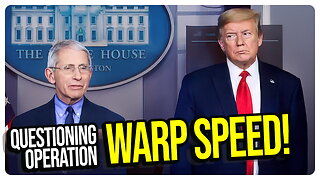 1:41:06
1:41:06
vivafrei
6 hours agoTrump Changing Tune on Operation Warp Speed? CBC Promoting Propaganda? Shiloh Hendrix Update & MORE!
194K109 -

The Mike Schwartz Show
4 hours agoTHE MIKE SCHWARTZ SHOW Evening Edition 09-01-2025
7.05K4 -
 46:25
46:25
The Quartering
8 hours agoMeta PC Winner, Trump Ruins Libs Dark Fantasy & Raja Jackson Case Heats Up!
140K62 -
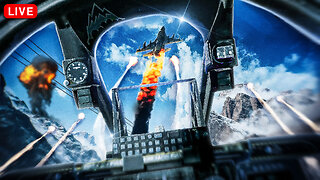 5:35:58
5:35:58
StoneMountain64
7 hours agoNew Missions for Battlefield 6 Unlocks (+New Mouse and Keyboard)
44.1K1 -
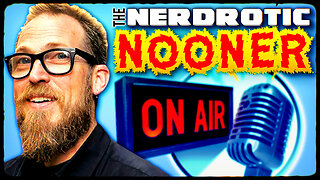 2:09:47
2:09:47
Nerdrotic
12 hours ago $6.96 earnedHollywood's Long Dark Summer of the Soul - Nerdrotic Nooner 511
80.4K6 -
 1:36:05
1:36:05
Side Scrollers Podcast
9 hours agoStreamer ATTACKS Men Then Cries Victim + Pronoun Rant Anniversary + More | Side Scrollers
61.8K -
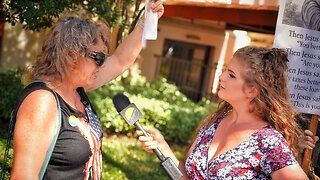 12:06
12:06
Liberty Hangout
2 days agoDemocrat Woman Can't Define 'Woman'
74.1K93